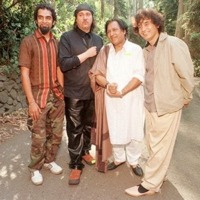
Harrison’s three movements have a crisp and recognizable architecture, following the old fast-slow-fast pattern of the Italian sinfonia (overture) that predated the mature symphony. In that sense, Harrison’s “simfony”-using a bastardized spelling of his own invention-was honoring the idea of a symphony in its most literal and basic sense, as derived from Greek words that mean “sounding together.” Harrison and company were consciously turning away from the hierarchical system of musical interplay that Beethoven epitomized, leaning instead into an Asian sensibility that was less attached to forcing sounds into fixed relationships, or even recognizable pitches.

The fact that he labeled it his “fifth” even though he had completed no prior symphony (or “simfony”) must be seen as Harrison thumbing his nose at Beethoven’s most iconic composition. In one of his first works for percussion ensemble, completed as a 21-year-old in 1939, Harrison chose the somewhat subversive title Fifth Simfony.

His two chief disciples were John Cage and Lou Harrison, who mounted groundbreaking percussion concerts in Seattle, where Cage worked as a rehearsal pianist for dance classes, and San Francisco, where Harrison lived. The elder statesman was Henry Cowell, who wrote pioneering works for percussion while he was incarcerated in California’s San Quentin State Prison. The modern history of the percussion ensemble centers on the confluence of three maverick composers from the West Coast.


 0 kommentar(er)
0 kommentar(er)
